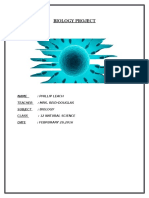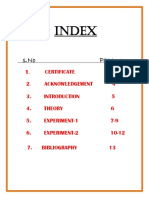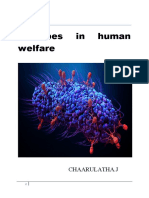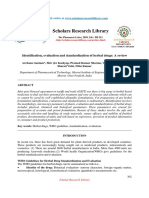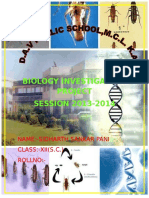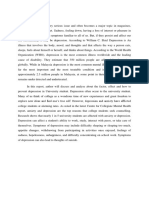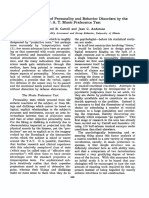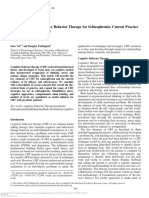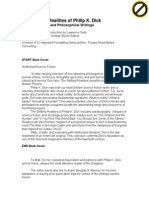1
BIOLOGY PROJECT
Project title: EFFECT OF CANNABIS ON HUMAN BODY
Project submitted by
S.Thuhina hansini CLASS 11
TH
ALLEN PCB-1 PAAVAI CBSE VIDYASHARAM

2
INDEX Page no Introduction 3 Cannabiniods and Cannabinoid Receptors 4
Biochemical Mechanisms in the Brain 5 Toxicity 6 Phychoactive effects 7 Somatic effects 8 Neurological effects 8 Long term effects of Cannabis 9 Acute Psychosis 9 Chronic psychosis 9 Schizophrenia 9 Depressive disorder 10 Cancer 10 Respiratory effects 11 Reproductive and endocrine effects 11 Conclusion 11
3
EFFECT OF CANNABIS ON HUMAN BODY
Introduction:
Cannabis, also known as marijuana, and by numerous other names, is a preparation of the Cannabis plant intended for use as a psychoactive or drug and as medicine. Pharmacologically, the principal psychoactive constituent of Cannabis is tetrahydrocannabinol (THC); It is one of 483 known compounds in the plant, including at least 84 other cannabinoids, such as cannabidiol (CBD), cannabinol (CBN), tetrahydrocannabivarin (THCV), and cannabigerol (CBG). The effects of cannabisare caused by chemical compounds in cannabis, including cannabinoids such as tetrahydrocannabinol (THC). Cannabis has both psychological and physiological effects on the human body. Five European Countries, Canada, and twenty US states have legalized medical cannabis if prescribed for nausea, pain or the alleviation of symptoms surrounding chronic illness. Cannabis use is associated with social and behavioral problems, and carriesa risk to physical and mental health. These effects caused by cannabis on different parts of the human body are looked into in this project
.
4
Cannabiniods and Cannabinoid Receptors:
The most notably prevalent psychoactive substances in cannabis are cannabinoids, most notably THC.
Cannabinoid receptors
, located throughout the body, are part of the endocannabinoid system, which is involved in a variety of physiological processes including appetite, pain-sensation, mood, and memory. The cannabinoid receptor is a typical member of the largest known family of receptors called a G protein-coupled receptor. A signature of this type or receptor is the distinct pattern of how the receptor molecules spans the cell membrane seven times. The location of the cannabinoid receptor exists on the cell membrane and both outside (extracellularly) and inside (intracellularly) the cell membrane. CB1 receptors, the bigger of the two, are extraordinarily abundant in the brain. CB2 receptors are structurally different, found only on cells of the immune system, and seem to function similarly to its CB1 counterpart. CB2 receptors are mostcommonly prevalent on B-cells, natural killer cells, and monocytes, but can also be found on polymorphonuclearneutrophilcells, T8 cells and T4 cells. In the tonsils, the CB2 receptors appear to appear to be restricted to B-lymphocyte-enriched areas. THC andendogenousanandamide additionally interact with glycine receptors.
Biochemical Mechanisms in the Brain
Cannabinoids usually contain a 1,1'-di-methyl-pyran ring, constituting a family of about 60 bi-cyclic and tri-cyclic compounds. Like most other neurological processes, the effects of cannabis on the brain follow the standard protocol of signal transduction, the





















